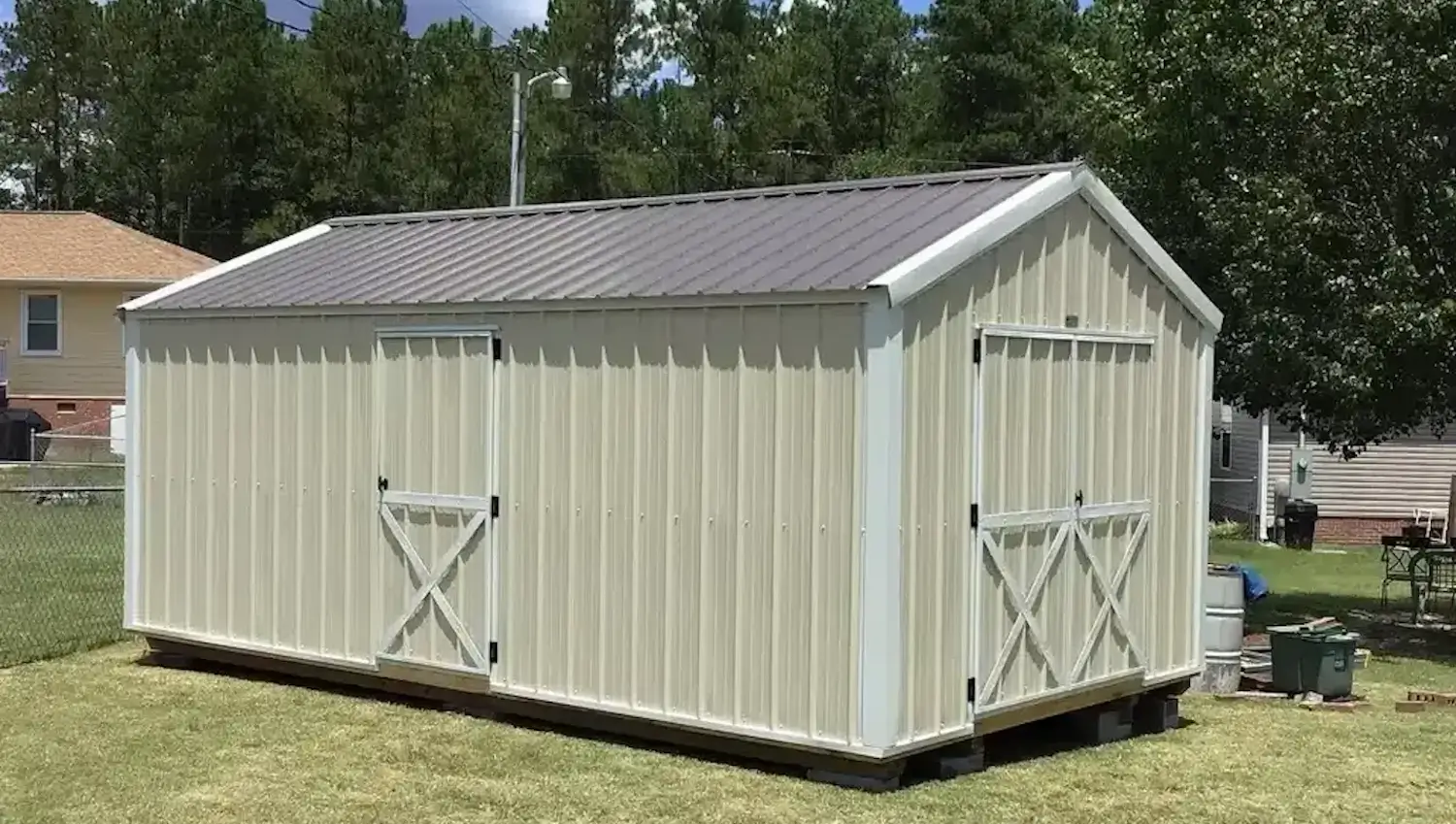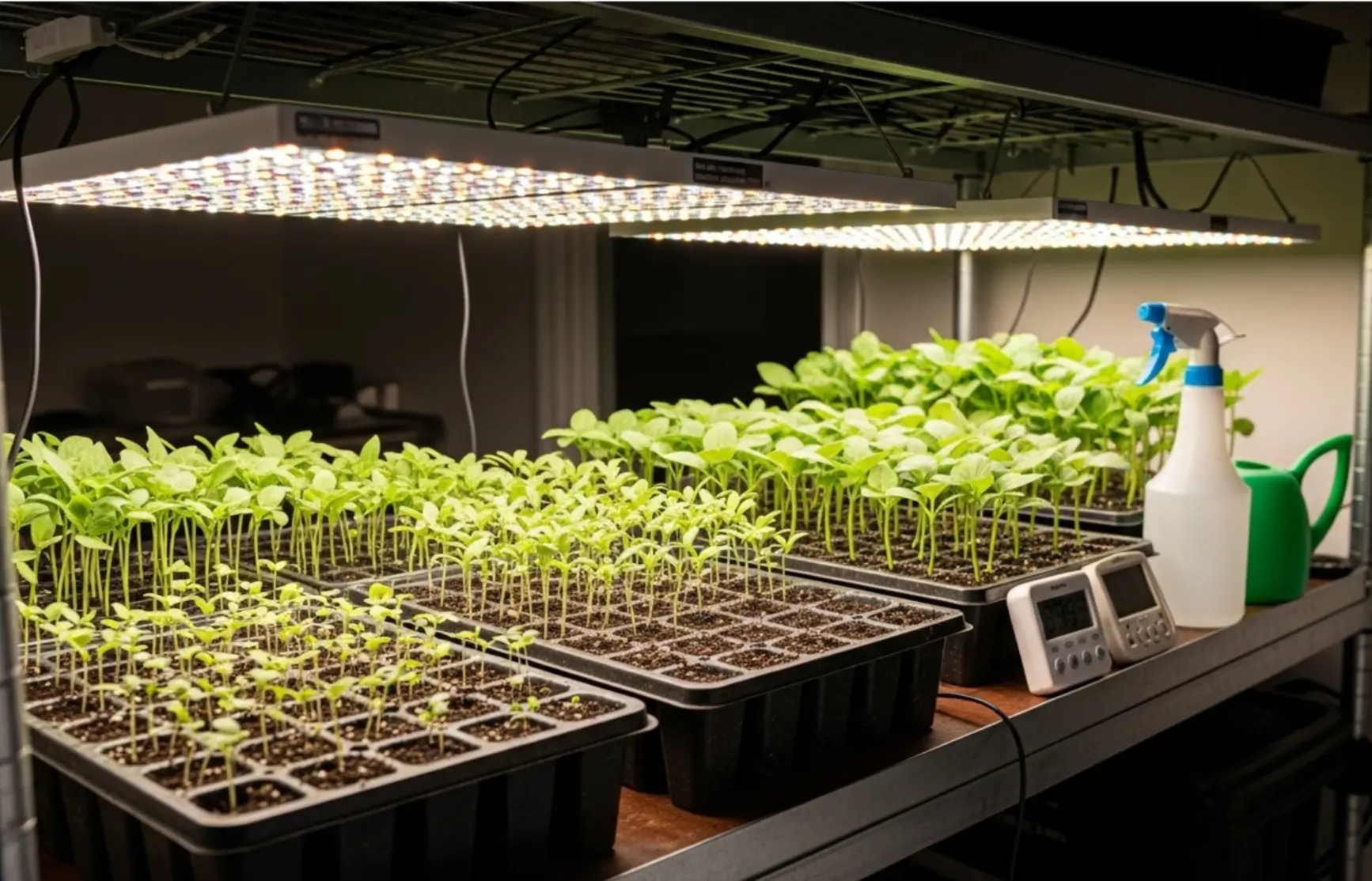
August 24, 2025

The most common problem that users who start seeds indoors have noticed is that their seedlings grow to be tall, thin and weak as they reach toward the nearest window. Even in a sunny room, the light that passes through glass is much weaker than outdoor light, especially during the winter or early spring when the days are short. As a result, the seedlings don’t receive the robust, even exposure to light they require. “Leggy” plants are tall and spindly, with seedlings that may be more likely to bend, break or keel over once they are transplanted to the garden.
Grow lights solve this problem by supplying the seedlings with the light they lack indoors. These lamps give all-spectrum lighting which is stable and imitates natural sunlight. When seedlings are exposed to the correct light, they develop to grow short, sturdy, and healthy to establish the strength they will require later in their growth. Grow lights are not merely useful to someone starting seeds indoors; they are also one of the most dependable methods of producing healthy and prosperous plant life.
When they are just sprouts, seedlings are very sensitive and the type of light that they receive makes a big difference in how they grow. Unlike mature plants, which may be able to survive with less light than they ideally need, seedlings require the proper amount and type of light at the right time in order to develop into strong, healthy plants.
The amount of light a seedling receives depends on how bright the light is and how close it is to the plant. Lights that are too distant don’t provide enough power, because brightness falls off rapidly with distance. This is known as the inverse-square law — when the distance is doubled, the light striking the plant drops to a quarter. That’s why grow lights are typically set just a few inches above seedlings and raised as the plant gets taller.
It’s not just that seedlings need light; they need the right colors:
Seedlings generally require 12 to 16 hours of light per day, with downtime for sleeping. They are often wired to a timer so that the lights come on or turn off at the same time each day. What really matters is the total quantity of useful light that a plant receives in one day, which is known as the Daily Light Integral (DLI).
Younger plants need more light in a denser area than mature plants do. For instance, a fully grown tomato plant can withstand partial shade, but a tomato seedling with insufficient light will stretch, weaken and fall over.
When seedlings don’t get enough light, the problems are easy to spot:
All seedlings are not equal.
There are several kinds of grow lights that gardeners can consider using for seedlings. There are pros and cons to each type. The right one depends on the amount of budget a gardener has to spend, space and goals.

Fluorescent lights, such as T5, T8, or compact fluorescent bulbs (CFLs), are a popular choice for beginners. They don’t give off much heat, so users can set them close to seedlings without burning the plants. They are also cheap and readily available. But they are not as durable as others, so seedlings may need more time to thrive. Fluorescent tubes also have to be replaced more frequently, as they wear out over time at a faster pace than LEDs.
These days, the most popular choice for indoor gardening is LEDs (light-emitting diodes). They consume minimal amounts of electricity, have a long life span and remain cool unlike older lights. Many LED grow lights are engineered to provide a “full spectrum” of light, which is similar to sunlight. Some models even permit gardeners to shift the balance of red and blue light as plants progress from one stage of growth to another. Although LEDs may cost a bit more upfront, their energy efficiency and longevity generally make them the best value in the long run.
Traditional Incandescent or halogen bulbs should not be used for seedlings. They produce tons of heat and not enough useful light for plants. Seedlings under them became burned up or 'drawn weak.' For that reason, most gardeners avoid them.
HID lights, such as metal halide and high-pressure sodium lamps, are very powerful and often used by professional growers. They generate intense light that penetrates widely, so they are a good choice for greenhouses or large indoor systems. But they use a lot of electricity, produce excessive heat and need special fixtures to hold them; not very practical for small-scale gardener.
Other gardeners mix natural and artificial light. They can, put seedlings to a sunny window and provide extra hours of light with LEDs or fluorescents. This method can conserve energy while offering plants the kick they require.
For seed starting under grow lights, an inexpensive LED or plain tube fluorescent may be sufficient. For bigger seedling trays or shelves, stronger lights with broader coverage are typically worth the cost. Gardeners may also want to consider space — some of the lights are thick, and others are slim and can easily fit onto a shelf.

The correct grow light is everything when starting indoor seedling light setup. At Growcycle, there are a number of variants, such as the ones at the low end that include affordable kit solutions, and the ones at the high end that offer professional-level fixtures.
The AgroBar Ultra 320W is seedling friendly. The vegetative spectrum it possesses promotes small size growth and robust stems, and the modular construction makes flexible arrangements possible.
Pros
Cons
Fluence is known for professional grow lights, and the SPYDR2 r47 does not disappoint. It provides a wide, diffused range of spectrum that is very similar to natural sunlight.
Pros
Cons
The SunBlaster T5HO is a classic option to beginners or those constrained by the budget when purchasing a light. It is a fluorescent lighting system that provides much cool and bright light but does not overpower young plants.
Pros
Cons
The PHOTOBIO MX2 LED is a serious light for large-scale or commercial growers. It has high power with a large coverage of 680W and can therefore be used in large seedling racks or in a green house.
Pros
Best for
The quality of a grow light only depends on its installation. The seedlings do not only need the right kind of light, they also need the perfect environment to grow. With careful planning, gardeners can build a growing station, which can yield healthy and strong plants.
Space Planning
The first thing to do is to plan the area that the seedlings will be planted.
The spacing between the seedlings and the light is important.
Consistent light cycles do well with the seedlings.
Lighting is only one part of the environment.
Grow lights are on most of the day, so safety is an issue.
Even with the perfect grow light and setup, the success or failure of an indoor growing system comes down to daily management.
Healthy seedlings are the key to a successful garden, and light is one of the crucial elements of their development. Grow lights have the ability to give the seedlings the right quantity of light and the right blend of hues they need on a daily basis. Grow lights are useful in growing seedlings in the right distance, timing, and airflow to grow to be short, strong and healthy.
Gardeners then have to decide on the best type of light for their plants, from simple choices like fluorescent vs LED grow lights. Growcycle simplifies this decision by providing an extensive selection of grow lights for all levels of growers. For the beginner who wants a bit of light on a few trays all the way to professionals lighting up large systems, they make quality products for healthy plants.
Disclaimer: This material is for informational purposes only and should not be relied on for legal, medical, financial, or any other form of professional advice.
Yes, if placed too close; strong lights can burn leaves, so always follow distance guidelines.
Maintain lights close but not touching, promote good air circulation and avoid overwatering.
Fluorescents should be 2–4 inches above seedlings, while LEDs usually need 8–12 inches, depending on intensity.